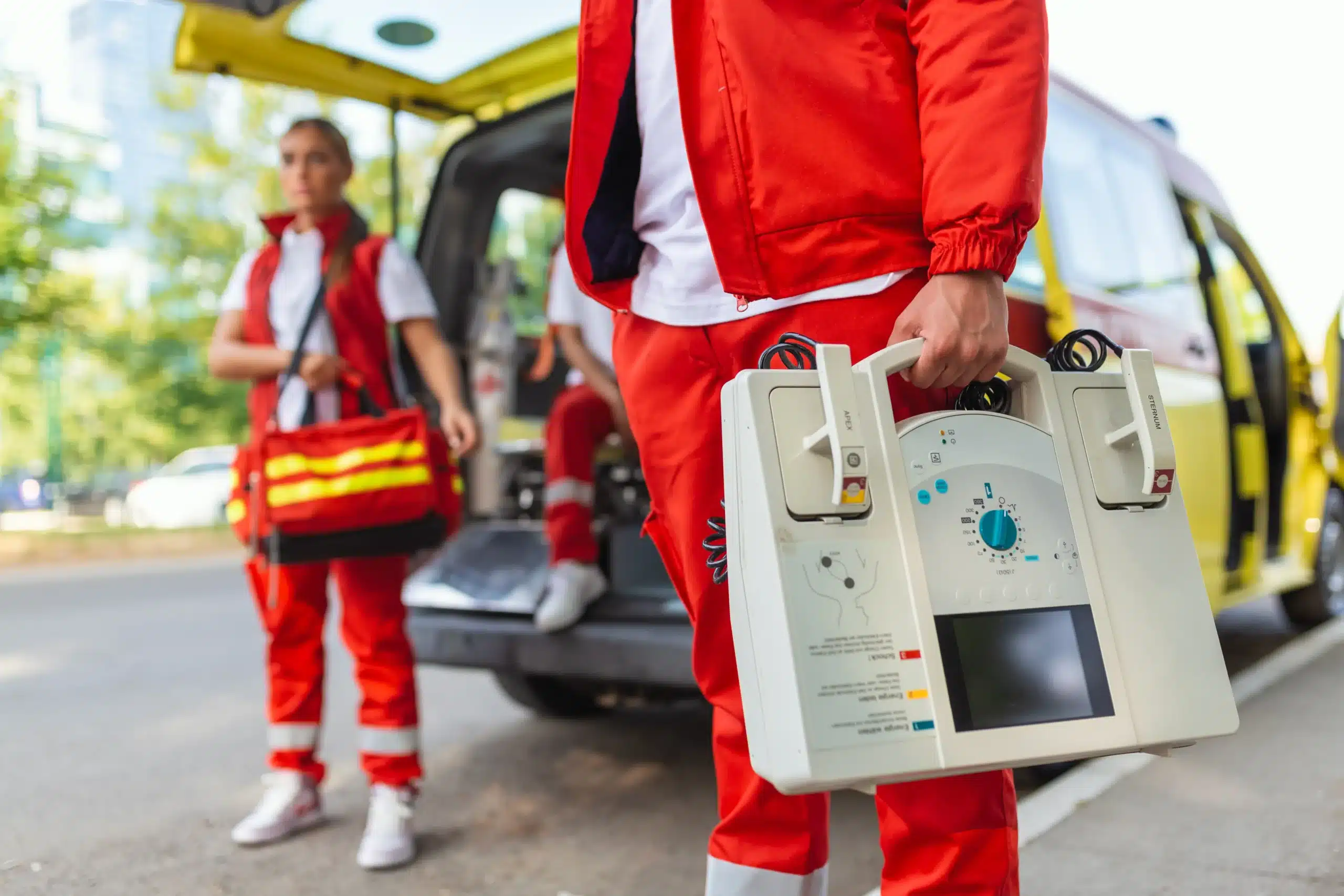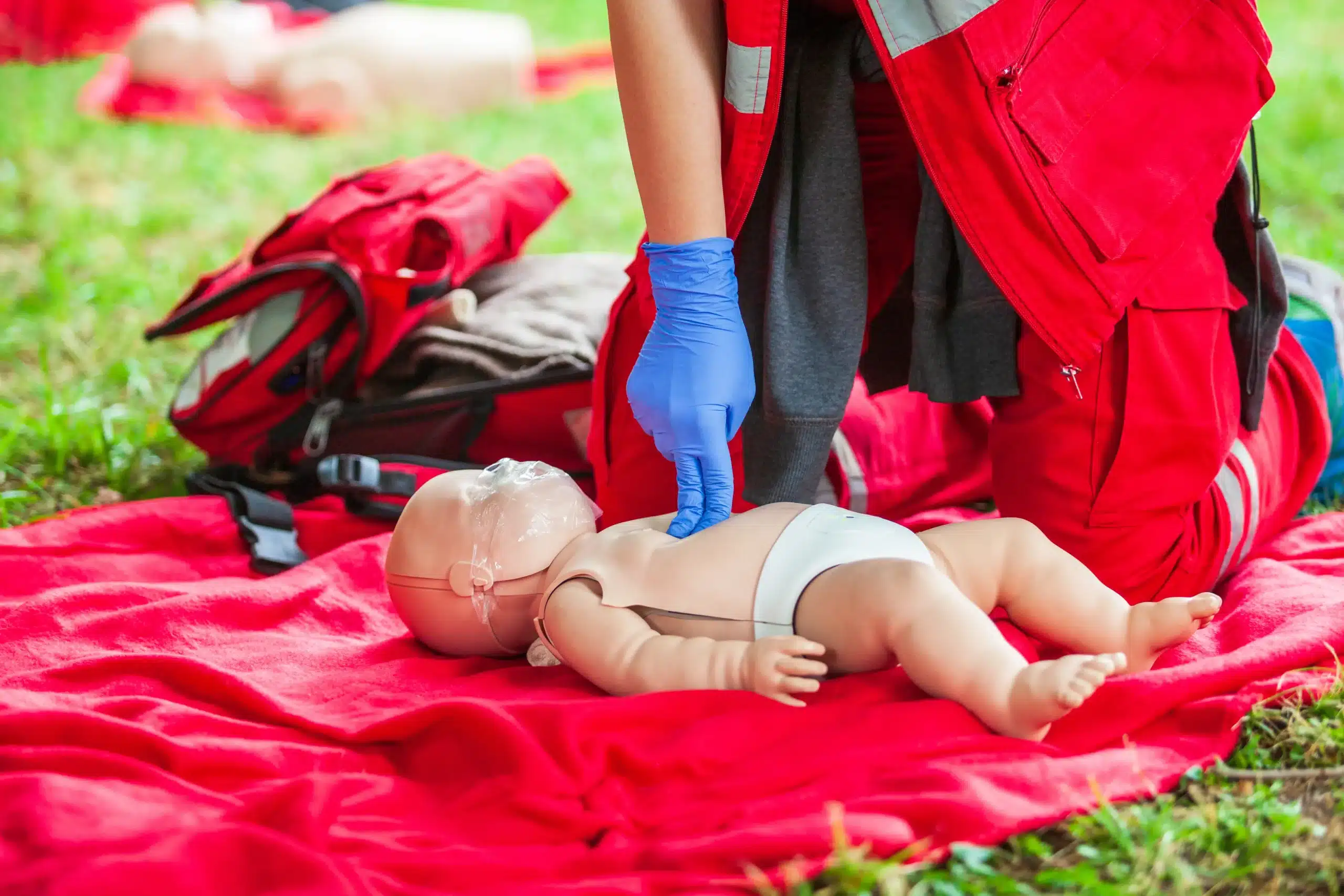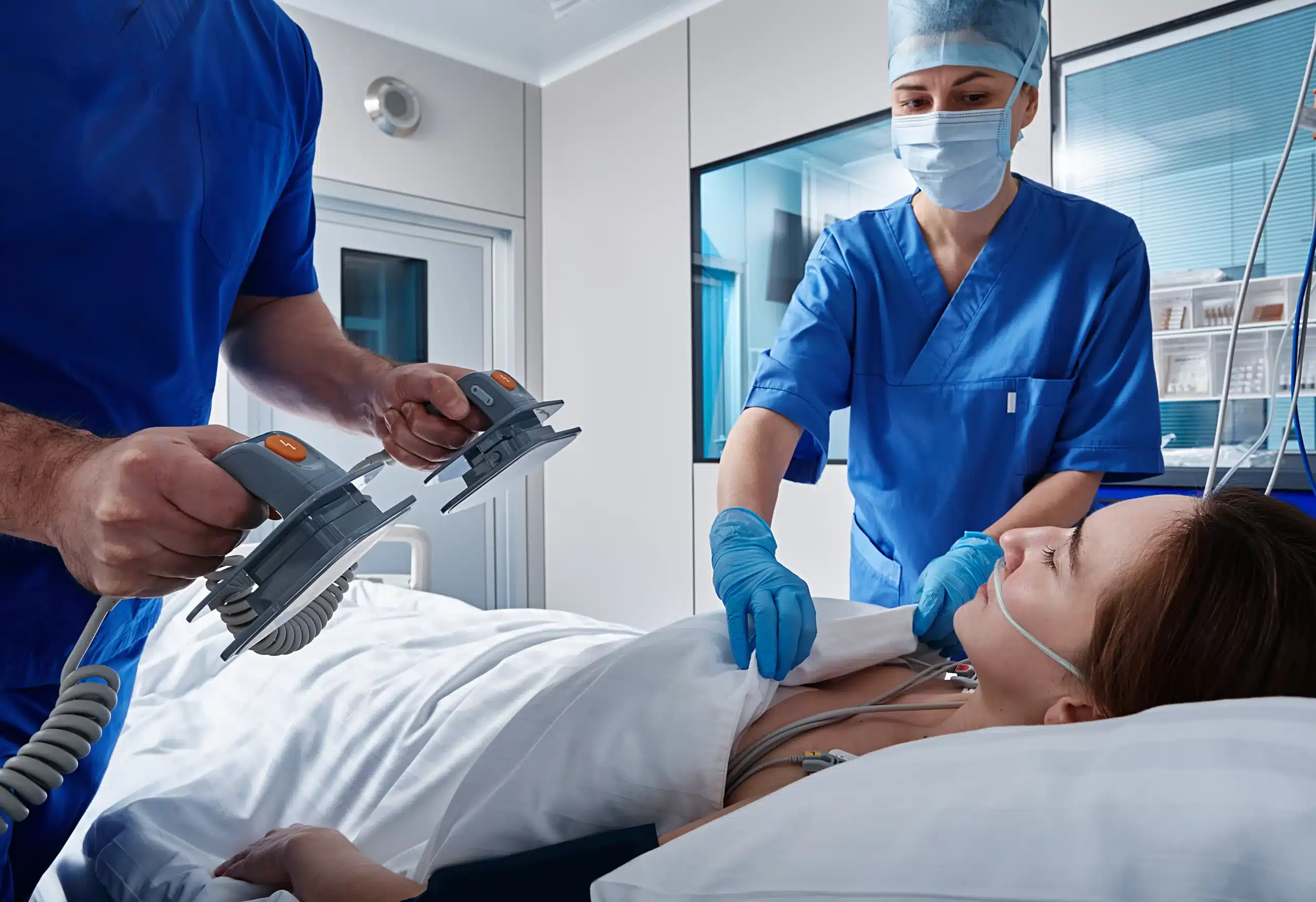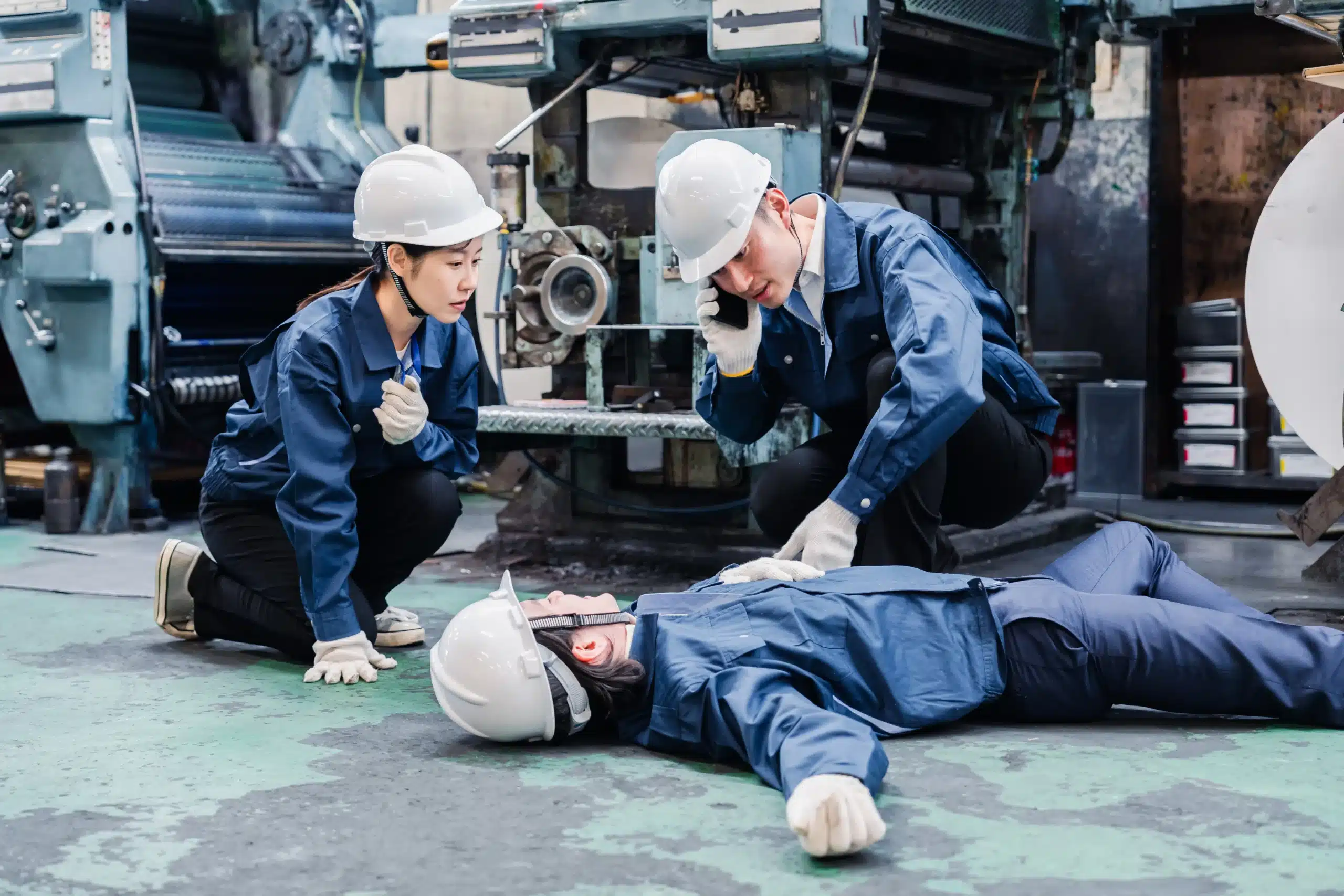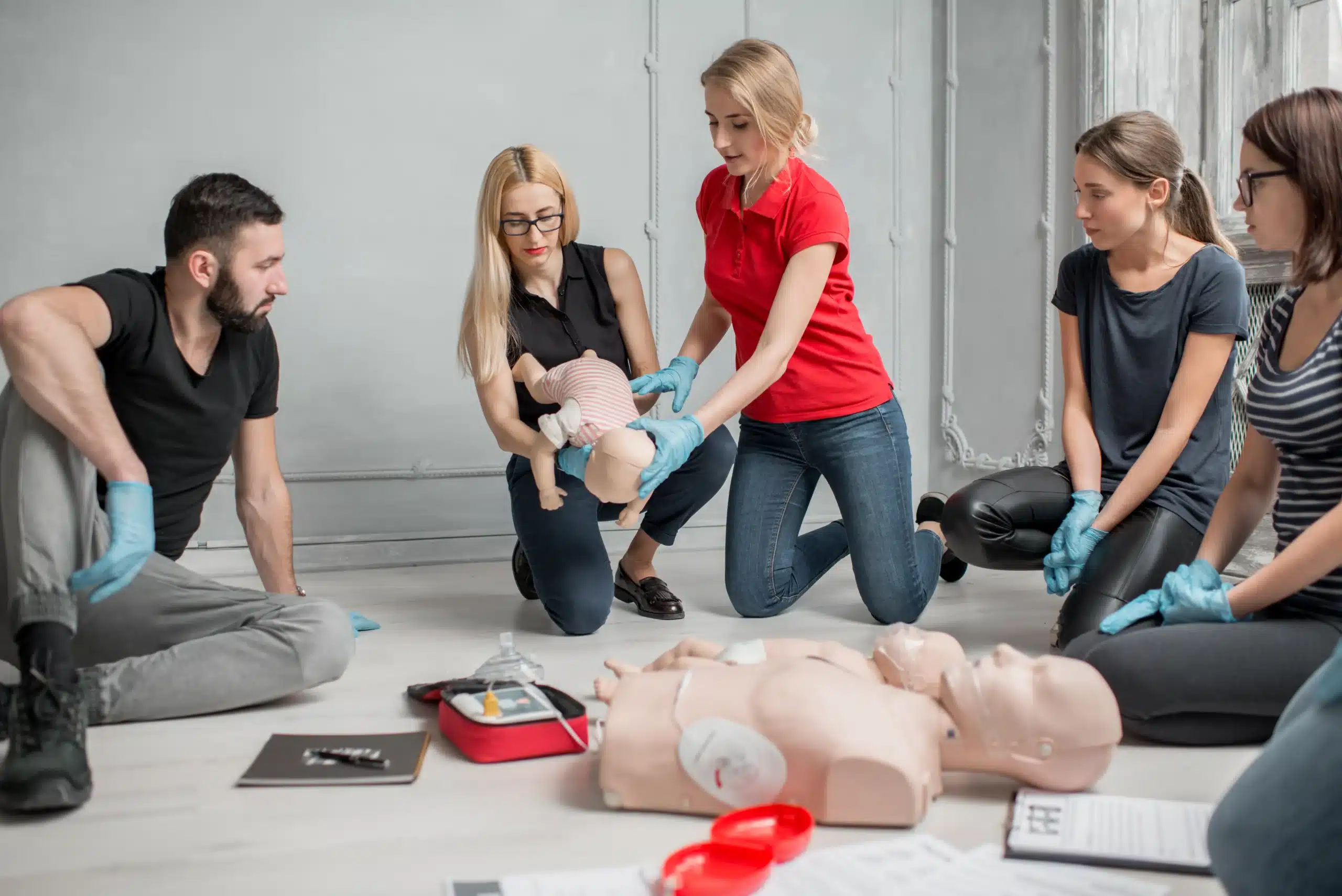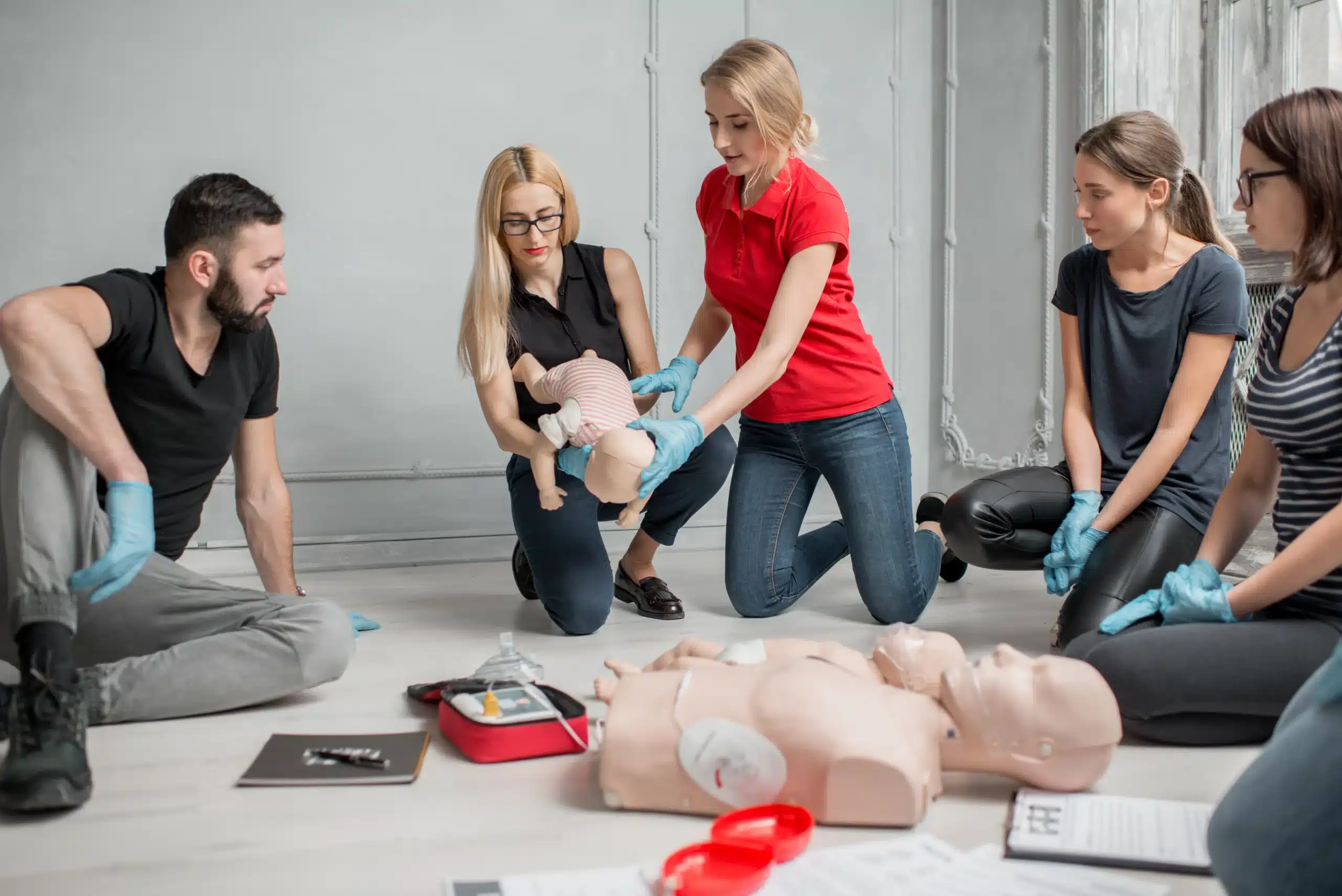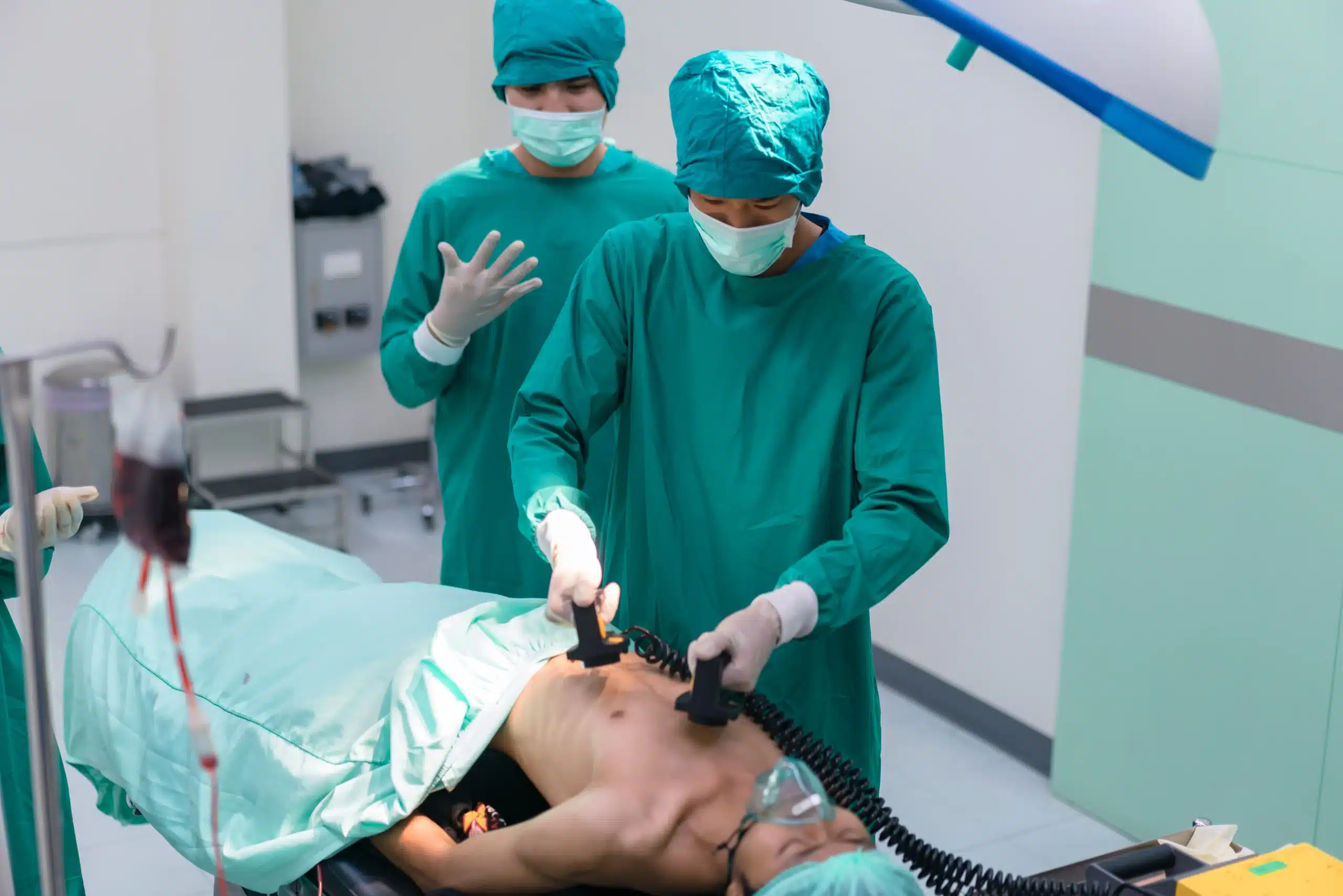Emergencies can happen anytime, anywhere. Being equipped with life-saving skills like Basic Life Support (BLS) can make you a valuable asset in a crisis. If you’re looking for BLS courses in Santa Clara, this guide is for you. We’ll break down what BLS training entails, why it’s important, and how to choose the right course from the many options available in Santa Clara. From understanding the core skills taught to navigating the certification process, we’ll cover everything you need to know to get started. Whether you’re a healthcare professional or a concerned citizen, this guide will help you find the perfect BLS course to match your needs and goals.
Key Takeaways
- BLS skills empower you to act: Learning BLS equips you to confidently respond to medical emergencies, providing crucial aid to adults, children, and infants. Find a course near you in Santa Clara.
- Select the right BLS course: Consider factors like location, schedule, and the provider’s reputation when choosing a BLS course. AHA-approved training centers like Safety Training Seminars offer high-quality instruction and certification.
- Stay prepared: Maintain your BLS skills through regular practice and renewal courses. Explore advanced certifications like ACLS and PALS to further enhance your life-saving abilities.
What are BLS Courses in Santa Clara?
BLS courses in Santa Clara cover the fundamental skills needed to respond to medical emergencies like cardiac arrest and choking. These courses are crucial for healthcare providers, but also incredibly valuable for anyone who wants to be prepared to help in a crisis. Having BLS certification not only boosts your confidence but can genuinely make a difference in life-or-death situations. Think of people like teachers, parents, coaches—anyone who might be the first on the scene during a medical emergency. BLS training empowers you to act quickly and effectively when every second counts.
What are BLS Courses and Why are They Important?
Basic Life Support (BLS) courses teach you how to recognize life-threatening emergencies and provide immediate care. It’s essential training for recognizing emergencies and providing that crucial initial response. Whether you’re a medical professional or simply someone who wants to be prepared, BLS certification gives you the tools to potentially save a life. It’s about having the knowledge and skills to make a real difference in critical situations.
Core BLS Skills You’ll Learn
In a BLS course, you’ll learn practical, hands-on skills, from high-quality chest compressions and giving proper ventilations to using an Automated External Defibrillator (AED). The training covers how to handle airway obstructions in adults, children, and infants, making sure you’re ready for a variety of situations. It’s a comprehensive program that gives you both the knowledge and the practice you need to respond confidently and effectively in a crisis.
Where to Find Top BLS Courses in Santa Clara
Finding the right BLS course can feel overwhelming with so many options. To simplify your search, we’ve compiled a list of reputable providers offering BLS certification in Santa Clara. Whether you’re a healthcare professional, a student, or simply want to learn this life-saving skill, this list will point you in the right direction.
Safety Training Seminars
Safety Training Seminars offers AHA-approved BLS certification in Santa Clara. They also teach CPR, ACLS, PALS, and First Aid. With classes in over 60 Northern California cities, they offer convenient locations and flexible scheduling, making them a practical choice for busy individuals.
American Red Cross
The American Red Cross provides BLS certification and recertification courses in nearby San Jose. They offer several learning formats, including traditional in-person classes and a blended learning option combining online coursework with hands-on skills sessions. The Red Cross’s blended Simulation Learning experience is a good fit for those who prefer a flexible approach.
Milpitas CPR Classes
Milpitas CPR Classes understands the importance of BLS training and offers various course options in Santa Clara. They can help you find the right course format for your schedule and learning style, providing clear guidance so you can make informed decisions about your training.
Bay Area CPR
Bay Area CPR offers a comprehensive selection of CPR classes in Santa Clara, including BLS, ACLS, PALS, and First Aid. Their courses equip people with the skills and confidence to respond effectively in medical emergencies.
Other Local Providers
Several other training centers and organizations offer BLS courses in Santa Clara. When choosing a provider, consider factors like class size, instructor experience, and overall course quality. Comparing different options can help you find the best fit. Contact providers directly with questions to learn more about their programs.
Compare Your BLS Course Options
Finding the right BLS course involves considering several factors. Think about your learning style, budget, and schedule as you explore the options available in Santa Clara.
Course Formats: In-Person, Online, and Hybrid
BLS courses in Santa Clara offer flexibility to match your learning preferences. Traditional in-person classes provide a structured environment with direct interaction with instructors and other students. These can often be completed in a single day. For those who prefer a more independent approach, blended learning options combine online modules with in-person skills sessions. This hybrid approach lets you learn the material at your own pace before demonstrating your skills in a practical setting.
Pricing, Discounts, and Group Rates
BLS course pricing varies, so compare options from different providers. Many offer group discounts, a cost-effective solution if you’re coordinating training for a team or organization. Also, inquire about potential discounts on training materials, which some providers may offer.
Scheduling and Course Duration
Busy schedules shouldn’t prevent you from getting BLS certified. Training centers in Santa Clara offer classes throughout the week and on weekends, with various start times. Some providers offer shorter courses, which can be completed in just a few hours, making it easier to fit into your busy schedule.
Certification Process and Validity
Your BLS certification will typically be valid for two years. Understand the certification process and how to maintain your credentials. Most providers offer renewal courses as your certification nears its expiration date, ensuring your skills and knowledge remain current.
AHA-Approved Certification and Digital Certificates
When choosing a course, look for American Heart Association (AHA) approval. This ensures the course meets established quality and comprehensiveness standards. Digital certificates offer a convenient way to access and share your credentials. Many providers allow you to print, download, or share your digital certificate as needed.
Choose the Right BLS Course
So you’re ready to sign up for a BLS course—great! Choosing the right course is an important step. Here’s what to consider:
Determine Your Professional Requirements
First things first: do you need BLS certification for your job or a specific program? Many healthcare roles, from medical assistants to doctors and nurses, require it. Double-check the exact certifications needed before you register for a class. Sometimes a CPR/First Aid certification is sufficient, while other professions require a full BLS certification from the American Heart Association. Knowing the specifics upfront will save you time and potential headaches later.
Evaluate Providers and Credentials
Not all BLS courses are created equal. Look for providers offering American Heart Association (AHA) accredited courses. The AHA sets the standard for high-quality BLS training. Check if the training center is an official AHA Training Center, like Safety Training Seminars, which offers various AHA courses including BLS, ACLS, and PALS. Also, consider the course format (in-person, online, or blended) and schedule. A flexible schedule is key if you have a busy work life. Milpitas CPR Classes offers a variety of course formats and schedules to fit your needs.
Read Reviews and Testimonials
Before committing to a course, see what other students say. Online reviews and testimonials offer valuable insights into the quality of instruction, the course materials, and the overall learning experience. Honest feedback can help you decide if a specific course is a good fit. You can find reviews for CPR classes in Santa Clara from various providers.
Address Common Concerns
It’s normal to have questions or concerns before taking a BLS course. Maybe you’re nervous about the hands-on skills portion or unsure if you can handle the material. Reach out to the course provider directly. A good provider will happily answer your questions and put you at ease. They can clarify what the course covers, including essential skills like chest compressions, giving rescue breaths, and using an AED. Knowing what to expect can make the whole experience much smoother. Contact Milpitas CPR Classes if you have any questions about their BLS courses.
Find Additional Resources and Support
BLS certification is a fantastic starting point, but it doesn’t have to be the end of your learning journey. Think about adding other certifications to your toolkit, like ACLS (Advanced Cardiovascular Life Support) or PALS (Pediatric Advanced Life Support). These certifications build on your BLS foundation and equip you to handle more complex medical emergencies. Staying up-to-date on the latest guidelines and best practices is always a good idea in the healthcare field. Look for resources and continuing education opportunities to keep your skills sharp. The RQI program, for example, offers ongoing training and skills verification for medical professionals. You can learn more about the RQI program offered by Milpitas CPR Classes.
Prepare for Your BLS Course
So, you’re ready to learn BLS? Great! Knowing what to expect can make the whole process smoother. This section covers training, tips for acing the course, keeping your certification current, and even how to level up your skills.
What to Expect During Training
Basic Life Support (BLS) training equips you with essential skills to respond to life-threatening emergencies like cardiac arrest, respiratory distress, and choking. Expect a combination of interactive learning, demonstrations, and hands-on practice. You’ll learn how to perform CPR, use an AED, and provide relief for choking victims. A good instructor will create a supportive learning environment where you feel comfortable asking questions. Check out our BLS course page for a detailed overview of what we cover at Milpitas CPR Classes.
Tips for Success
Want to get the most out of your BLS training? Come prepared to actively participate. Review any pre-course materials your provider sends. Don’t hesitate to ask questions—clarifying any doubts early on will build your confidence. Active listening and hands-on practice are key to mastering these vital skills. When choosing a provider, look for American Heart Association accreditation, flexible scheduling, and a comprehensive curriculum.
Maintain and Renew Your Certification
Your BLS certification is typically valid for two years. Staying current is crucial for providing effective care. Set reminders to avoid letting your certification lapse. Renewal courses are readily available and often streamlined for those already familiar with the material. This refresher ensures your skills remain sharp and aligned with the latest guidelines.
Practice Your Skills
BLS isn’t a “learn it once and forget it” kind of skill. Regular practice is essential for maintaining proficiency. Consider refreshing your skills with short practice sessions, even between renewals. This helps build muscle memory and ensures you can respond effectively under pressure. Confident and efficient action during a crisis can make all the difference.
Advance Your Skills: ACLS and PALS
Once you’ve mastered BLS, you might consider expanding your skillset with Advanced Cardiovascular Life Support (ACLS) or Pediatric Advanced Life Support (PALS). ACLS builds upon BLS, focusing on advanced interventions for adult patients in cardiac arrest or other cardiovascular emergencies. PALS provides specialized training for managing pediatric emergencies. These certifications can open up new opportunities and further enhance your ability to provide critical care.
Related Articles
- BLS for Healthcare Providers in Santa Clara: A Guide – Milpitas CPR Classes
- BLS Certification in Santa Clara: Your Full Guide – Milpitas CPR Classes
- ACLS Courses in Santa Clara: The Complete Guide – Milpitas CPR Classes
- BLS Certification in San Jose: Your Complete Guide – Milpitas CPR Classes
- BLS Certification Milpitas: Your Comprehensive Guide – Milpitas CPR Classes
Frequently Asked Questions
How long is BLS certification valid? BLS certification is typically valid for two years. It’s important to renew your certification before it expires to maintain your credentials and ensure your skills are up-to-date.
What’s the difference between BLS and CPR certification? While CPR is a core component of BLS, BLS training is more comprehensive. It covers a broader range of life-saving skills beyond CPR, such as using an AED and managing airway obstructions. BLS certification is often required for healthcare professionals and those in specific roles, whereas CPR certification may be sufficient for others.
What if I’m nervous about the hands-on skills portion of the course? It’s completely normal to feel a little apprehensive about the hands-on parts of the training. Reputable BLS course providers create a supportive learning environment. Don’t hesitate to voice any concerns to your instructor – they are there to guide you and help you build confidence.
Are online BLS courses as effective as in-person classes? Blended learning options, which combine online modules with in-person skills sessions, can be just as effective as traditional classroom courses. The online portion allows you to learn the material at your own pace, while the in-person skills sessions provide essential hands-on practice and feedback from instructors.
How can I find a BLS course that fits my schedule and budget? Many providers offer various course formats, schedules, and pricing options. Contact different training centers in your area to compare what they offer. Don’t forget to ask about potential discounts for groups or training materials. Finding a course that aligns with your needs is definitely doable.
